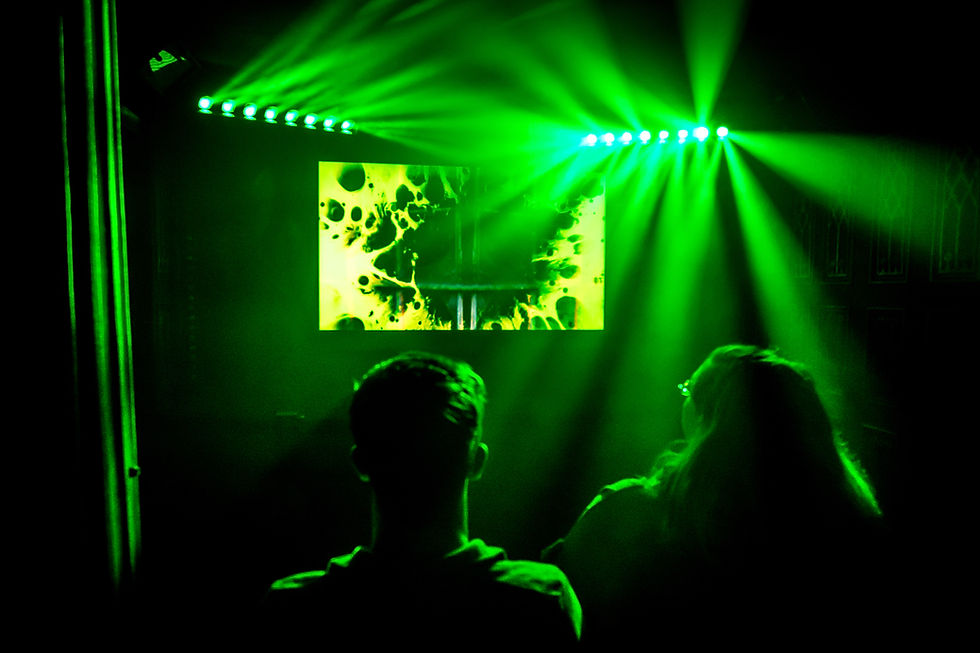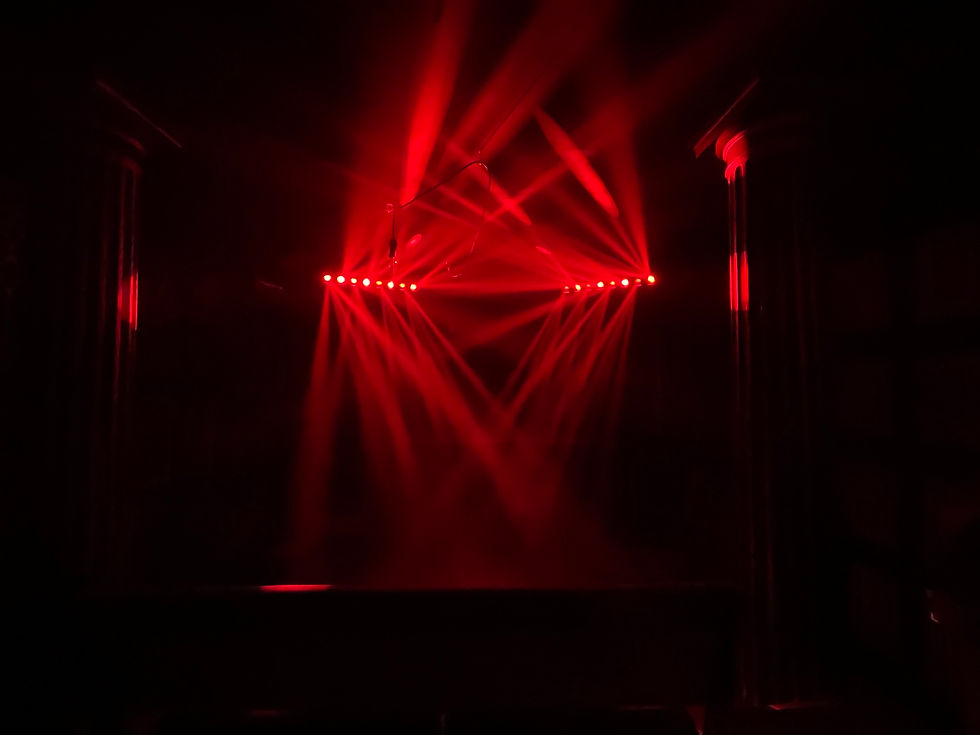IMMERSIVE DESIGN THEORY - "LOOK UP PRINCIPLE".
- dgoodman5
- Jun 10
- 4 min read
Updated: Jun 25
Designing Moments of Attention in Immersive Experiences
In the world of immersive design, there’s a moment every creator dreads:
The lights are dimmed. The set is dressed. The actors are in position. But the audience? They’re still staring at their phones.
This is the scenario that sits at the heart of a simple but powerful design theory: “The Look Up Principle.”
No, we’re not talking about making people literally crane their necks and stare at the ceiling. We’re talking about engagement—those critical moments in a show or experience where you need your audience’s attention. Not just passively, but fully, emotionally, instinctively.
And more importantly: how do you get them to “look up” without shouting at them?

The Scenario
Picture this: The audience is seated. The experience is about to begin. But every single guest is buried in distraction: phones, small talk, wandering thoughts.
The challenge is this: What do you do to make them “look up”?
This theory applies not just to theatre, but to games, movies, theme parks, and most pertinently, immersive experiences. And it doesn’t just matter at the beginning. The “Look Up” moment is critical any time you want the audience to lock in—to gasp, to feel, to act. So let’s talk about how you do that.
The Obvious Solution: Impact
The first, and most common method is the obvious one:
A loud sound.
A sudden lighting change.
A dramatic entrance or startling movement.
These moments are theatrical, visceral, and they work.They are the equivalent of banging a drum in a silent room.
Used well, they’re electric. They snap attention back instantly and memorably.
But here’s the trap: overuse dulls the edge. When every moment is turned up to 11, none of them feel meaningful. Your immersive world starts to feel like a haunted house full of jump scares: predictable, noisy, forgettable.
The Inverse Approach: Stillness
Now, consider the opposite.
Let’s say the environment is humming: ambient music, soft lighting, casual murmurings. The audience is comfortable. Perhaps too comfortable. And then— The lights fade to near black. The sound drop. One light remains. One sound plays.
Suddenly, all attention narrows. Whatever is in that spotlight is now everything. You’ve created space, contrast, and intention.
And most importantly: they’ve looked up.
This is the power of juxtaposition. It's not just about noise and silence, light and dark—it’s about contrast between any states:
Stillness after chaos.
Softness after aggression.
Humor after dread.
The bigger the emotional gear-shift, the more profound the attention-grab.
Strategic Quiet: The Art of Waiting
Not every moment of a production is designed to be amazing.There will be downtime—times when guests are waiting, listening to instructions, watching scene transitions.
These moments are valuable.
They allow your audience to breathe. And because the energy is lower, the amount of effort needed to change that energy—to create a Look Up moment—is drastically reduced. You don’t need fireworks. You just need contrast.
Want a small scene to feel meaningful? Drop it after a long stretch of passive waiting.
Want a big bang to feel huge? Let it follow a whisper.
This is pacing. And pacing is attention design.
Where “Look Up” Lives
Think of Look Up moments as milestones. They don’t happen constantly, but when they do, they define the guest journey.
Great Look Up moments include:
The opening beat of your experience.
The mid-point twist or change in tone.
The finale, where consequences become clear.
Transitions, where a shift in space or story occurs.
Cover moments, where something unseen (a reset, a scene change, a technical shift) is happening.
In fact, Look Up moments are often used to hide the machinery of the experience. Take concerts: you notice every new light as it flares across the stage—but you never notice the lights turning off and resetting. Because attention has been directed. Distraction has been orchestrated. Each light is it's own Look Up moment.
Case Study: The Woman in Black
(Spoiler Alert)
In the long-running theatrical production The Woman in Black, there’s a near-perfect use of the Look Up theory.
From the moment the audience enters the auditorium, a low-frequency drone hums quietly under the entire performance. It’s barely perceptible, and almost immediatly forgotton about.
Then, at a pivotal moment—the moment the ghost appears—that sound stops. Not with a bang. Not with a musical sting. Just... silence.
And suddenly, everyone in the room feels it. They don’t know why. But they look up. It's one of the most subtle and effective attention shifts in modern theatre.
That’s Look Up.
In Conclusion: Curate the Contrast
The “Look Up” theory isn’t just about grabbing attention. It's about designing attention. It's about knowing when your audience has slipped into passivity, and shifting their state, emotionally, mentally and physically back into presence.
Use impact sparingly. Use stillness wisely. Create contrast, not just chaos.
Because when a guest “looks up,” what they see next matters more than anything that came before.
Want to apply this theory to your next immersive environment? Ask yourself this:
“If they were on their phones right now…What would I do to make them look up?”
Then design that.
DESIGNING IMMERSIVE.
It's complicated, intricate and specialist. Koncept has it mastered.
Koncept are specialists in writing and designing immersive attractions that stand out. With a portfolio of award-winning productions, Koncept has a proven track record of transforming ideas into fully realized, expertly written experiences that customers will pay to be immersed in.
_edited_p.png)




Comments